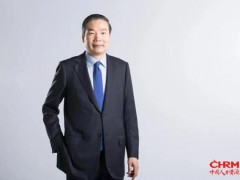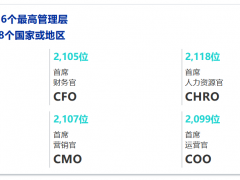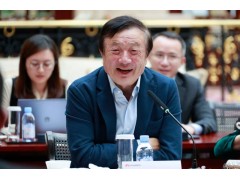沃伦 巴菲特
在体育界,人们一直对美国《体育画报》(Sports Illustrated )厄运津津乐道:运动员一旦登上了这本杂志的封面,马上就会匪夷所思地陷入低谷。而在商界,“沃伦 巴菲特接班人”这几个词具有同样的魔力,诅咒与之如影随形。不论是颇有投资大师风范的商界后起之秀,伯克希尔 哈撒韦公司(Berkshire Hathaway)最有希望的接班人,还是任何其他具有巴菲特特质的人,都没能躲过这个魔咒——有些人甚至输得一败涂地。
早在几年之前,SI便开始为《体育画报》的厄运寻找统计证据或者反证。一位反对者指出,这些运动员只不过是从巅峰状态回复到了平均水平。换句话说,登上杂志封面,并不是因为媒体预测到他们未来会成功——而是因为他们正处在巅峰。
任何可能成为下一个巴菲特的人们都应该铭记一点:从统计学上来看,“奥马哈先知”巴菲特是独一无二的。
大卫 索科尔
今年,大卫 索科尔辞去了在伯克希尔 哈撒韦公司及其旗下的奈特捷(NetJets)公司的职务。在此之前,大卫 索科尔被普遍认为是巴菲特最有希望的接班人。2010年,美国国家广播公司商业新闻台(CNBC)从陈惠仁编著的《巴菲特的幕后智囊团》(Behind the Berkshire Hathaway Curtain)一书中摘录了部分内容,标题为“‘下一任’沃伦 巴菲特向‘现任’沃伦 巴菲特取经”。在摘录中,索科尔提到,他学到的最重要的一点是,在制定商业决策时,要抛开个人情感。
但是,今年三月,索科尔辞去了伯克希尔 哈撒韦公司经理一职,也失去了作为“沃伦 巴菲特”接班人的身份。索科尔的离职可能与其违反内幕交易的规定有关,在伯克希尔公司宣布收购化学公司路博润(Lubrizol)的计划之前,他已经购买了该公司的股票。而在今年4月份,伯克希尔公司的年度股东大会上,原先力挺索科尔的巴菲特表示,索科尔的行为是“难以理解和不可原谅的”,这使索科尔的声望继续下滑。
埃迪 兰伯特
2004年的时候,埃迪 兰伯特可谓志得意满。那时,他还在计划合并零售业巨头凯马特(Kmart)与西尔斯(Sears)。《彭博商业周刊》(Bloomberg BusinessWeek)将兰伯特称为“巴菲特第二”,并把他对西尔斯公司的投资与巴菲特收购纺织企业伯克希尔 哈撒韦公司的投资相提并论。当时,西尔斯公司正面临困境。而在被巴菲特收购之前,伯克希尔 哈撒韦公司也是一直处于亏损。
2004年是兰伯特的全盛时期,在这一年,他旗下的对冲基金ESL投资公司(ESL Investments)连续15年平均年收益高达30%。而2003年刚刚走出破产阴影的凯马特,凭借兰伯特的投资,公司股票价格激增了300%。两年之后,《财富》杂志将兰伯特称为“同代人中最棒的投资者”和“投资界的史蒂夫 乔布斯”。
但是,兰伯特对西尔斯—凯马特合并后的投资,却并不顺利。截至2011年5月4日,西尔斯的同店销售额连续十年持续下降。在2010年致西尔斯股东的信中,兰伯特表示:“我们的财务业绩依然让人无法接受。”而伯克希尔的股东却很少听到这种话。
路易斯 辛普森
2000年,《福布斯》(Forbes )杂志的一篇文章在开头写道:“沃伦 巴菲特的接班人,是一位隐士,就像奥马哈的传奇巫师一样,他致力于价值投资。”这位传奇巫师,指的便是政府雇员保险公司(Geico)总裁兼资本运营首席执行官——路易斯 辛普森。在1995年巴菲特致股东的信中,《福布斯》找到了令人信服的证据,证明辛普森在巴菲特心目中的卓越地位,信中写道:“[卢]的加盟,使伯克希尔可以拥有一位出色的专业人才,如果[副总裁查理 芒格]和我发生意外,他可以处理公司的投资。”
但是近期,辛普森却退出了巴菲特接班人的行列。在Geico任职31年后,他于2010年底退休。目前,辛普森与他的妻子在美国佛罗里达州的那不勒斯共同经营一家名为SQ Advisors LLC的投资顾问公司。
勒布朗 詹姆斯
2007年,CNNMoney 刊登了一篇名为《勒布朗:下一个巴菲特?》的文章,重点描述了篮球巨星勒布朗 詹姆斯在球场之外的商业头脑。《福布斯》在同年发表了一篇文章,称詹姆斯摆脱了运动员投资者的传统投资模式,因为他并没有把自己的投资决定权全盘委托给代理人。相反,詹姆斯帮助他的经纪人马弗里克 卡特成立了LRMR体育市场运营公司,负责自己所有的媒体业务,帮助体育明星商谈公司协议。LRMR负责运作了勒布朗 詹姆斯声名狼藉的ESPN专访——《重大决定》(The Decision)。该节目在去年播出,詹姆斯花了整整一个小时的时间,告诉全世界,他将要离开克里夫兰骑士队(Cleveland Cavaliers),转投迈阿密热火队(Miami Heat)。
而巴菲特呢?1957年,巴菲特在奥马哈买下了一栋房子,至今依然住在那里,并且赢得了全镇人的尊敬。
李路
根据《华尔街日报》(Wall Street Journal)2010年的一篇报道,在参加一位共同的朋友举办的感恩节宴会上,李路结识了巴菲特的得力助手查理 芒格,两人一见如故。芒格在接受《华尔街日报》采访时表示,他认为,李成为伯克希尔的顶级投资经理,是“预料中的必然结果”。2010年8月,《华尔街日报》发表了一篇名为《谁将是更优秀的巴菲特接班人:李路还是大卫 索科尔?》的博客,文中对两位潜在接班人的资质进行了对比。
虽然李并未像索科尔那样戏剧性地离开,但是,他也从来没有真正为伯克希尔工作过。目前,他管理着自己创办的公司——喜马拉雅资本管理公司(Himalaya Capital Management)。在公司创办之初,芒格曾协助其募集资金。
汉克 格林伯格
2000年,《纽约时报》( New York Times )的一篇文章指出,尽管巴菲特凭借其投资天赋为自己赢得了荣誉,但美国国际集团(AIG)的首席执行官莫里斯 “汉克” 格林伯格却让AIG赚得钵满盆满。文章表示,以十年期计算,在1990年投资AIG将比投资伯克希尔有更高的投资回报。尽管文章并没有将格林伯格称为“下一个沃伦 巴菲特”,但它将两人管理各自保险业务的方式进行了对比,结果显示,格林伯格所做的投资决定,有时更为明智。
但是,五年之后,格林伯格便失去了与巴菲特平起平坐的资格。当时的纽约州司法部长埃利奥特 斯皮策找到了证据,证明格林伯格在AIG存在欺诈行为。
格林伯格在争议声中辞职,目前在金融服务公司斯塔尔投资集团(C.V. Starr &Co.)担任首席执行官。该公司以AIG创始人科尼利厄斯 范德 斯塔尔的名字命名。据报道,格林伯格一直计划将斯塔尔打造成“AIG第二”。鉴于他的老东家已经向美国财政部提出了850亿美元紧急救助的申请,看来他的目标或许也只剩一步之遥。
比尔兹敦女士投资俱乐部(The Beardstown Ladies)
这个组织由伊利诺伊州比尔兹敦的一群老年女性发起成立,曾在在二十世纪九十年代中期引起了轰动。她们声称,这家成立于1983年的俱乐部年投资收益率超过23%。她们出版的《比尔兹敦女士的常识投资指南》(The Beardstown Ladies' Common-Sense Investment Guide)一书曾经登上《纽约时报》的畅销书排行榜。
然而,这群民间专家的经验之谈后来被证实是站不住脚的。那些令人心动的数字竟然是因为计算错误导致的。俱乐部请审计师对其23%的年收益率数值进行了核查,结果发现实际回报率仅为9.1%,低于标准普尔500(Standard &Poor 500's)当时的平均记录。由此可见,要想像巴菲特那样获得高额回报,最起码数字运算不能出错。
Warren Buffett
In sports, they talk about the Sports Illustrated jinx: the mysterious slump that happens when an athlete makes it onto the magazine's cover. In business, the curse is summoned with four magic words: "the next Warren Buffett." Whether the up-and-comer is trading like the great investor, a potential successor at Berkshire Hathaway or just has Buffett's bearing, each one has failed to live up to the hype -- several of them disastrously so.
A few years back, SI went looking forstatistical proof or disproof of the jinx. One naysayer pointed out that these athletes were simply reverting to the mean. In other words, making the cover is not the media predicting future success -- it's calling the top.
That's something worth remembering for would-be-Buffetts: Statistically speaking, the Oracle of Omaha is unlikely to ever be matched.
David Sokol
Before his resignation from his roles at Berkshire Hathaway and its subsidiary NetJets this year, David Sokol was widely considered Buffett's heir apparent. In 2010, CNBC ran an excerpt titled "The 'Next' Warren Buffett on what he's learned from the 'current' Warren Buffett" from Ronald W. Chan's book Behind the Berkshire Hathaway Curtain. A key lesson Sokol mentioned in the excerpt was the importance of removing emotion from business decisions.
But Sokol lost his standing as "the next Warren Buffett" when he resigned from his position as a manager at Berkshire Hathaway this past March. His departure coincided with the possibility that he violated insider-trading rules when he purchased shares in chemicals company Lubrizol before Berkshire announced plans to buy the company. Sokol's fall from grace continued when Buffett, formerly supportive of Sokol, said in April at Berkshire's annual shareholder's meeting that Sokol's actions were "inexplicable and inexcusable."
Eddie Lampert
Eddie Lampert looked like he was on top of the world in 2004 when he was still planning to merge giant retailers Kmart and Sears. Bloomberg BusinessWeek dubbed Lampert "the next Warren Buffett," comparing his investment in the flagging Sears to Buffett's purchase of the textile company Berkshire Hathaway, which was losing money before Buffett bought it.
During Lampert's heyday in 2004, his hedge fund ESL Investments had had a 15-year run of 30% average annual returns. Kmart, which had just crawled out of bankruptcy in 2003, had a 300% jump in stock price thanks to Lampert's investment. Two years later, Fortune called Lampert, "the best investor of his generation" and "the Steve Jobs of investing."
But Lampert's investment in the Sears-Kmart combo has been a dog, not a Dairy Queen. As of May 4, 2011, same-store sales at Sears had dropped every year for a decade. Lampert's 2010 annual letter to Sears shareholders stated, "Our financial results remain at unacceptable levels," a line Berkshire shareholders seldom encounter.
Louis Simpson
A 2000 Forbes piece began, "the next Warren Buffett is a reclusive soul who, like Omaha's legendary wizard, is devoted to value investing." It was referring to Geico's President and CEO of Capital Operations, Louis Simpson. Forbes found convincing evidence for Simpson's eminence in Buffett's 1995 annual letter, which said, "[Lou's] presence on the scene assures us that Berkshire would have an extraordinary professional immediately available to handle its investments if something were to happen to [Vice Chairman Charles Munger] and me."
But Simpson recently stepped out of the line of succession. After 31 years with Geico, he left his position at the end of 2010. Simpson retired, and now is managing an investment firm, called SQ Advisors LLC, with his wife in Naples, Florida.
LeBron James
In 2007, CNNMoney published a piece called, "LeBron: The Next Buffett?" that highlighted basketball star LeBron James' business savvy beyond the court. In an article the same year, Fortune described James' deviating from the typical athlete-investor path because he didn't outsource all of his investment decisions to an agent. Instead, James took charge of his media deals by helping his business manager Maverick Carter found LRMR, a company that helps sports celebrities negotiate corporate agreements.
LRMR managed LeBron James' infamous EPSN special, "The Decision." Aired last year, James took a full hour to tell the world that he was leaving the Cleveland Cavaliers to play for the Miami Heat.
Buffett? Still living in the Omaha house he purchased in 1957 and revered all over town.
Li Lu
Li hit it off with Buffett's right-hand-man Charlie Munger when they met at a mutual friend's Thanksgiving dinner in 2003, according to a 2010 story in the Wall Street Journal. Munger told the Journal that he considered it "a foregone conclusion" that Li would become a top investing official at Berkshire. In August, a Journal blog post titled "Who Is the Better Buffett 2.0: Li Lu or David Sokol?" compared the qualifications of each as potential successors.
Li didn't leave the running as dramatically as Sokol, but instead, he never started working at Berkshire. He now runs his own company called Himalaya Capital Management, which Munger helped fund in its early days.
Hank Greenberg
A 2000 New York Times article pointed out that while Warren Buffett was getting the credit for his investing genius, AIG CEO Maurice "Hank" Greenberg was running quite a profitable operation at AIG. The article claimed a 1990 investment in AIG would have generated better returns than one in Berkshire for that ten-year period. While the text doesn't call Greenberg "the next Warren Buffett," it compares the way the two men ruled their respective insurance businesses and suggests that Greenberg sometimes made the better investments of the two moguls.
But Greenberg's status as on par with Buffett crashed five years later, when an investigation by then New York attorney general Eliot Spitzer turned up evidence that Greenberg had overseen fraudulent activities at AIG.
Greenberg resigned in the midst of the controversy, and now is CEO of financial services firm C.V. Starr and Co., named after AIG's founder, Cornelius Vander Starr. Greenberg has been reported to be building AIG 2 at Starr, presumably stopping short of the period when his old firm required an $85 billion bailout from the U.S. Treasury.
The Beardstown Ladies
A group of elderly women from Beardstown, Ill. caused a stir in the mid-'90s when they claimed their club, founded in 1983, had realized an annual return of more than 23% on their investments. The book they published, "The Beardstown Ladies' Common-Sense Investment Guide," became a New York Times best-seller.
But the folksy know-how of the group proved too good to be true and the impressive numbers attributable to mathematical errors. The group checked its 23% number with an auditor who discovered the return was really 9.1%, well under the Standard &Poor 500's record average at the time. Turns out, one of the basic requirements of getting returns like Buffett is doing the math right.
 手机版|
手机版|

 二维码|
二维码|








